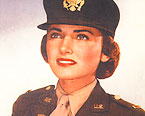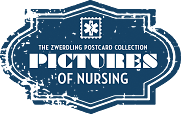Education Higher Education
Picture Perfect Images and Realities of Military Nursing During the World Wars

The module encourages students to consider the complex relationship between idealized American gender roles, wartime propaganda, and female military nurses’ real experiences during World War I and World War II. Historically, Americans have viewed nursing as a feminine profession. While nurses and other women have always been involved in US military actions, during the two World Wars the government began to officially incorporate women into the armed forces. Most Americans at the time considered the military a masculine institution and therefore, an inappropriate place for women. Consequently, these changes in policy resulted in some societal backlash. However, unlike regular servicewomen, military nurses were often spared public criticism, due to the feminine status of the nursing profession. The government employed propaganda to further the idea that military nursing was a feminine pursuit and to minimize any negative public reactions against nurses in the armed forces. The module uses the exhibition as a starting point and builds upon it using readings, primary sources, and discussion questions designed to explore how nurses have been depicted in American culture overtime, and how those perspectives have changed in conjunction with historical events and evolving notions of popular femininity. The goal is that the module will deepen students’ understanding of the intricacies of gender roles, labor, media, and change over time, as well as encourage students to think critically about these elements historically and in their everyday lives. This module is authored by Loren Miller, a Ph.D. candidate in History at American University, Washington DC.
Unit 1: Military Nursing through World War I
contains material for three classes. Class 1 explores how the United States developed different visions of idealized womanhood, which changed over time from the Civil War through World War I. Class 2 shows how the government and popular artists represented these archetypes in World War I recruiting and propaganda, and Class 3 explores the real roles nurses played prior to and during the conflict.
Unit 2. Military Nursing during World War
contains three classes and follows a similar thematic trajectory to Unit 1. Class 4 demonstrates how government-sponsored publicity depicted female ideals in recruitment and propaganda materials that showed women entering the civilian workforce and the military during World War II. Class 5 discusses the varieties of work women performed during the war, but maintains a focus on military nursing and the struggles women faced officially entering the armed forces. Finally, Class 6 focuses on primary sources, such as military nurses’ wartime letters, photographs, and oral histories that explore how those women viewed their experiences.


